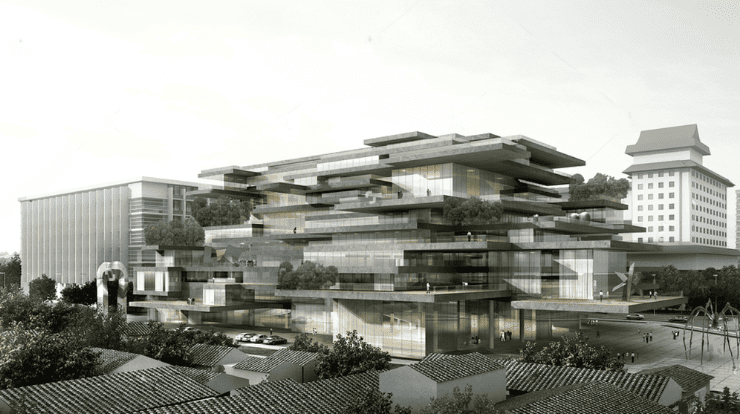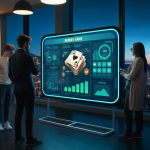Dubai’s real estate industry is one of the most advanced in the world. It regularly adopts new technologies to attract investors and enhance the buying process. One of the most powerful tools being used today is the immersive virtual presentation of architectural scale models.
These digital replicas are more than just visual showcases. They allow real-time interaction, even from remote locations. This is especially useful for international clients and busy decision-makers who cannot visit Dubai in person. Remote access makes it easier to explore, evaluate, and engage with a property without travel or delays.
Access Through Web-Based 3D Platforms
Many developers in Dubai now offer access to architectural scale models through web-based platforms. These platforms can be opened on a desktop, tablet, or smartphone. Clients simply click on a link to view the model in a browser.
They can rotate the model, zoom in and out, and navigate different sections. These online tools allow clients to view entire masterplans or single units. There’s no need to download software or invest in special equipment. This simplicity makes it easier to share with multiple stakeholders such as partners or family members.
Virtual Reality Headset Experiences
Clients who own VR headsets can enjoy a much deeper level of interaction. Using devices like the Meta Quest, HTC Vive, or Valve Index, they can immerse themselves inside the virtual model. These headsets allow full 360-degree exploration.
Clients can walk through the rooms, go upstairs, and look out the windows. The movement feels natural, and the visuals are realistic. For Dubai-based projects, this kind of immersion helps showcase the layout, design, and surrounding views in a lifelike way. It helps international investors experience the space without stepping foot in the city.
Augmented Reality on Mobile Devices
Augmented reality is another way clients interact with architectural scale models Dubai remotely. Many developers now provide AR-compatible mobile apps. Clients can use their smartphone or tablet camera to project the model into their physical environment.
For example, they can place the digital building on their table and walk around it. This is especially useful for viewing building exteriors, landscaping, and public spaces. The AR model responds to touch gestures, allowing zooming and rotation. This format feels engaging and helps users understand scale and design more clearly.
Live Guided Presentations With Sales Agents
Not all clients want to explore on their own. Live guided presentations are an excellent remote option. In this format, a sales agent shares their screen or hosts a virtual meeting. They walk the client through the architectural scale model step by step.
The client can ask questions, request comparisons, or focus on specific features. The agent can switch between floor plans, change finishes, or show daytime and nighttime lighting. This human interaction builds trust. It also helps answer concerns in real-time, improving the buying journey.
Interactive Touchscreen Simulations Over the Cloud
In some setups, developers offer touchscreen-like simulations over the cloud. These allow clients to control the experience with a mouse or touchpad. They can open doors, change room configurations, or see the property with different furniture layouts.
This simulation is often connected to a cloud server, which means updates are real-time. If the developer changes a design or adds a new unit, the client sees it immediately. This method also allows clients to save their preferences and revisit the presentation later.
Voice-Guided Walkthroughs and Narration
To make virtual exploration more user-friendly, developers add voice-guided features. As the client moves through the model, a narrator explains what they are seeing. These narrations can highlight key features, technical details, and design inspirations.
Some setups also include multilingual support. This helps cater to Dubai’s global investor base. Voice-guided tours make it easier for clients who are less tech-savvy. They can focus on the property rather than trying to figure out how to use the interface.
Customizable View Options and Settings
Remote interaction with architectural scale models Dubai also allows customization. Clients can toggle between views like top-down, street-level, and internal walkthrough. They can change wall colors, flooring, and lighting settings. Some models even include seasonal or weather-based changes.
For example, a client can see how the outdoor area looks during sunset or at night. This customization adds a layer of personal involvement and helps the client visualize their future space in detail.
Chatbots and Virtual Assistants in Presentations
To further enhance the remote experience, many developers integrate chatbots and virtual assistants. These tools help clients navigate the model, answer common questions, and offer suggestions.
For instance, if a client is looking at a 2-bedroom unit, the assistant might recommend similar layouts or nearby amenities. This AI support makes the experience smoother and helps clients stay engaged without needing constant human help.
Collaborative Viewing and Sharing Options
Another way clients interact with the model remotely is through shared sessions. Multiple users can view the same model from different locations. This is perfect for family members or business partners investing together.
Everyone can see the same screen, mark areas of interest, and leave comments. Some platforms even allow simultaneous interaction, so each user controls their view independently. These features support collaborative decision-making across borders and time zones.
Integration With Booking and CRM Tools
To make the experience seamless, some platforms allow clients to take action directly. After exploring the model, they can check availability, make a booking, or request a callback.
The platform may link to a CRM system that updates the sales team instantly. This integration reduces delays and improves client satisfaction. It also helps developers keep track of interest and follow up more efficiently.
Conclusion
There are many ways clients can interact with architectural scale models Dubai for immersive virtual presentations remotely. From web-based platforms and VR headsets to augmented reality and live guided tours, the options are diverse. These methods are designed to be user-friendly, engaging, and effective.
They help clients make confident decisions from anywhere in the world. For developers, offering remote interaction boosts accessibility, widens the audience, and speeds up the sales process. As Dubai continues to lead in property innovation, remote immersive presentations will become even more valuable in the global real estate market.








